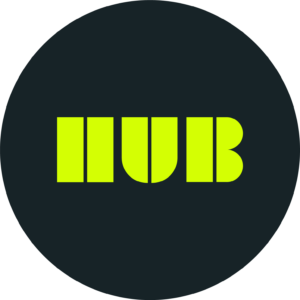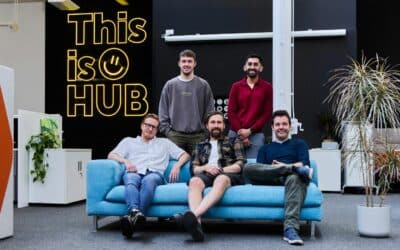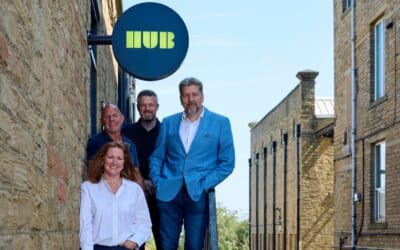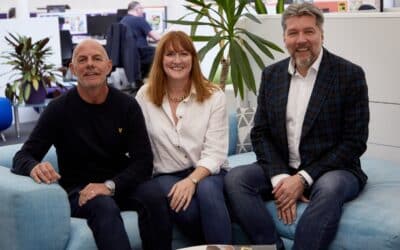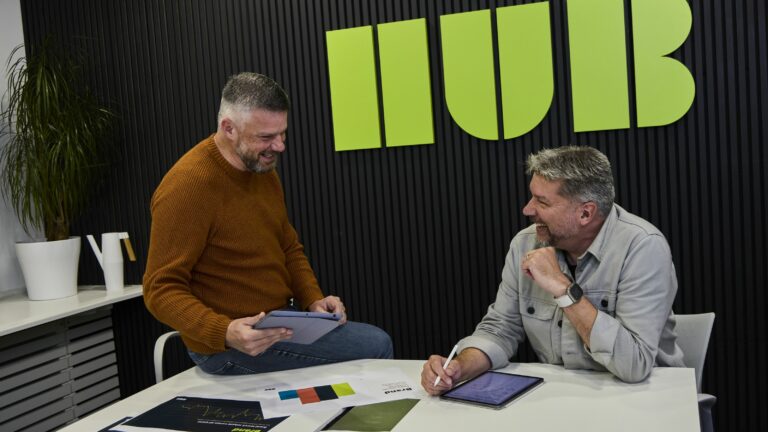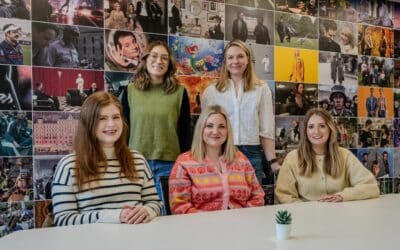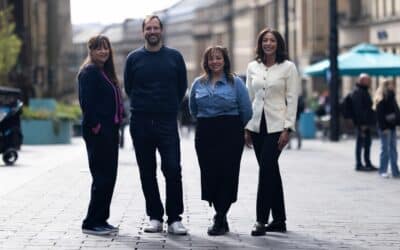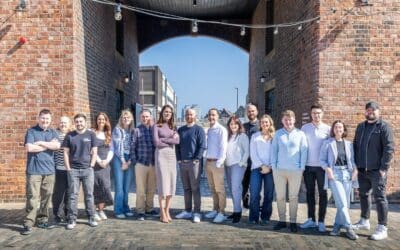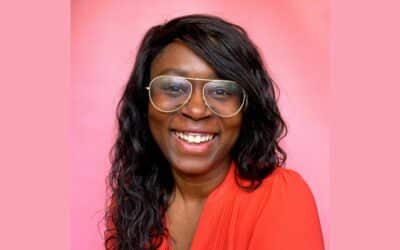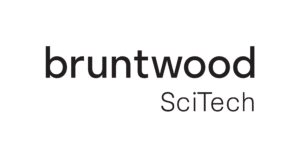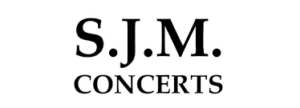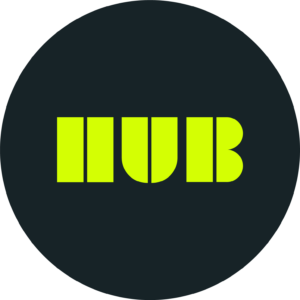With two decades of experience in the SEO industry, Malcolm Slade has dedicated much of his career to devising digital marketing strategies for household-name brands.
While working with clients such as PrettyLittleThing and Ann Summers, the Performance Director at HUB had always recognised the importance of brand-building.
But until he joined the Leeds agency nine months ago, he’d never been able to prove the importance of offline marketing in generating first-place Google rankings.
That led to the surprise realisation that several HUB clients who had done little more than the SEO basics had navigated their way to the top of the search rankings through offline tactics alone.
To learn more about his findings and why brand-building is key to client digital marketing strategies at HUB, we sat down with Malcolm and CEO Rob Shaw.
PROLIFIC NORTH: You’ve had quite the career, Malcolm. Why did you choose HUB as the next step?
MALCOLM SLADE: I chose HUB because it’s a truly integrated agency with everything needed in-house to build and scale an online brand. From creative to digital and data analytics, having all these components under one roof creates a seamless environment for delivering top-tier strategies.
Something else that really excited me was HUB’s ability to integrate data with TV and offline activity, a combination I’ve found elusive in previous roles. The agency also has a number of passionate and talented individuals, and a portfolio of long-standing clients who are executing successful omnichannel strategies.
PN: Tell us more about your recent findings on the connection between brand-building and search marketing performance?
MS: I have always been a massive advocate of brand-building over pure reliance on SEO or PPC. But until joining HUB my beliefs – which came from working with PrettyLittleThing at a very early stage in their journey, Teletext Holidays as they wound down their internal operations and Ann Summers as they battled hard to stay relevant in a market filled with new online competitors – were based on what I had seen rather than what I could prove.
Since joining HUB I have been able to access data around the full marketing mix for clients, and this data has shown strong correlations between offline activity and SEO success.
Offline marketing efforts, especially high-impact TV campaigns and direct mailers, significantly raise brand awareness. When consumers see a brand repeatedly on TV or receive a well-crafted mail piece, they often turn to Google to learn more. This surge in branded searches signals to Google that there is a growing interest in the brand, indirectly boosting the brand’s perceived authority and visibility in search rankings.
Another factor is that offline marketing, especially TV campaigns, often lead to a strong presence in social media and online conversations, even when not directly intended. TV campaigns often inspire organic social shares, blog posts and reviews, owing to the fact that it’s widely cited as the most trusted form of advertising. This leads to natural backlinks and user-generated content. Google’s algorithms value these types of organic mentions and links, further enhancing the brand’s search engine performance despite limited SEO efforts.
When brands reduce their investment in offline marketing efforts and shift their entire focus to digital marketing, they often experience the opposite effect in terms of overall brand strength and Google search performance. While digital marketing is incredibly effective in targeting specific audiences and driving measurable results, the long-term impact of neglecting offline brand-building activities can lead to diminishing returns.
For instance, a decrease in branded search traffic sends a negative signal to Google’s algorithms, which potentially use search volume and user behavior to assess the relevance and authority of a brand. Without consistent offline exposure to drive interest, the brand may start to lose its footing in organic search rankings, even if digital efforts remain robust.
PN: How has AI affected the ways in which you work at HUB?
MS: AI, particularly large language models (LLMs), have had an impact on the way HUB works, but it’s important to emphasize that our core mission – connecting with stakeholders and audiences in unique, creative and meaningful ways – remains unchanged.
Marketing is about creating authentic human connections, not just recycling old tactics or relying on automated systems. AI has enhanced our workflows, but it hasn’t replaced the need for human creativity, judgment and strategy, and we certainly wouldn’t rely on LLMs without expert oversight and review.
PN: Why do you think agencies are having such a hard time at the moment?
MS: Agencies are facing significant challenges right now, and many of these struggles stem from being stuck in outdated methods. A lot of agencies are still relying on tactics like mass content production, paid link-building and other “quick fix” solutions that were effective years ago but no longer align with today’s marketing landscape. The goalposts have shifted, and marketing is now far more about consumer experience, brand authenticity and integrated strategies than simply ticking SEO boxes or buying links.
PN: What do you think the future holds for marketing?
MS: I think the future of marketing will be defined by a shift away from over-reliance on Google and outdated tactics like paid link-building. Instead, brands will need to focus on diversifying their marketing channels and producing high-quality, multi-channel content that engages consumers rather than simply being rankings fodder.
PN: Turning to you Rob, you’re coming up to two years at HUB now. How have you found it?
ROB SHAW: I’ve thoroughly enjoyed learning more about content production across both photography and videography as well as the importance and skill needed in media planning.
Everyone loves watching a client shoot and seeing the final product, delivered across all channels from digital to OOH or TV.
I have focussed on re-establishing the brand as a credible competitor in the integrated agency scene and building the foundations we need for future growth now we are bringing in new clients to the agency. This includes HUB’s debut into the awards circuit, and our first win at the 2024 Prolific North Creative Awards for our CareCo CGI videos. We have expanded our services, bringing CGI and Digital PR capabilities in-house, and a large part of that includes recruiting individuals who are experts in their chosen fields. So we’ve got a strong momentum behind us as we head into 2025.
PN: Are you seeing any trends or changes in what clients are looking for in an agency?
RS: I’ve been surprised by bigger brands actively pursuing smaller independent agencies for significant briefs – the idea of being a bigger fish in a smaller pond. More clients are looking for better returns from their marketing spend in challenging economic conditions and we are having far more open conversations about improving ROI and considering new channels for marketing activity.
We are also having more conversations around attribution modelling – obviously Google has muddied the waters here with the planned cookie removal and then reversal but it doesn’t change the need for CMOs to clearly demonstrate how the different strands of marketing activity are working together to drive sales.
PN: With this in mind, what is the focus for HUB in the next 12 months?
We’ve put a lot of work into the brand and increasing the calibre and depth of our delivery teams. We have also enjoyed working on some really exciting projects in 2024 so far, including the campaign creative for La Redoute’s Roisin Quinn collection and Real FX Disney Stitch, we’re looking forward to building on this momentum.
Our focus now is growth by meeting our current clients’ needs and expanding our service offering to them, as well as growth in new business as we demonstrate what we can offer as a fully integrated agency.
Overall, I’m very excited to see where the next 12 months take us.

